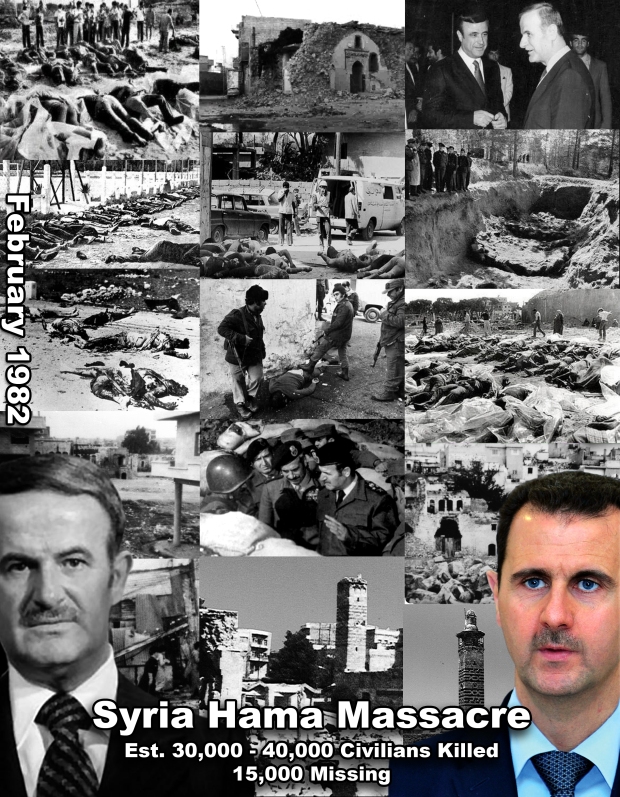Thirty years ago today, then-Syrian President Hafez al-Assad launched what’s known as one of the bloodiest chapters of modern Arab history: the Hama Massacre.
The Hama massacre (Arabic: مجزرة حماة) occurred in February 1982, when the Syrian Arab Army and the Defense Companies, under the orders of the country’s then-president, Hafez al-Assad, besieged the town of Hama for 27 days in order to quell an uprising by the Muslim Brotherhood against al-Assad’s government. The massacre, carried out by the Syrian Army under commanding General Rifaat al-Assad, effectively ended the campaign begun in 1976 by Sunni Muslim groups, including the Muslim Brotherhood, against the government.
Initial diplomatic reports from Western countries stated that 1,000 were killed. Subsequent estimates vary, it was between 30,000 or 40,000 civilians were killed (Syrian Human Rights Committee), in addition to the 15,000 missing who have not been found to this day, and the 100,000 expelled.
About 1,000 Syrian soldiers were killed during the operation and large parts of the old city were destroyed. Alongside such events as Black September in Jordan, the attack has been described as one of “the single deadliest acts by any Arab government against its own people in the modern Middle East”. The vast majority of the victims were civilians
After the initial attacks, military and internal security personnel were dispatched to comb through the rubble for surviving members of the Muslim Brotherhood and their sympathizers.[18] Torture and mass executions of suspected rebel sympathizers ensued, killing many thousands over several weeks.[citation needed] Rifaat, suspecting that rebels were still hiding in tunnels under the old city, had diesel fuel pumped into them and set ablaze and stationed T-72 tanks at the tunnel entrances to shell people trying to escape from the tunnels.

Articles:
Syria’s 1982 Hama Massacre Recalled: Lesson for Assad Today?
http://middleeastvoices.voanews.com/2012/02/syrias-1982-hama-massacre-recalled-lesson-for-assad-today/#ixzz3R6G0wKCQ
The Hama Massacre – reasons, supporters of the rebellion, consequences
http://www.grin.com/en/e-book/63819/the-hama-massacre-reasons-supporters-of-the-rebellion-consequences
